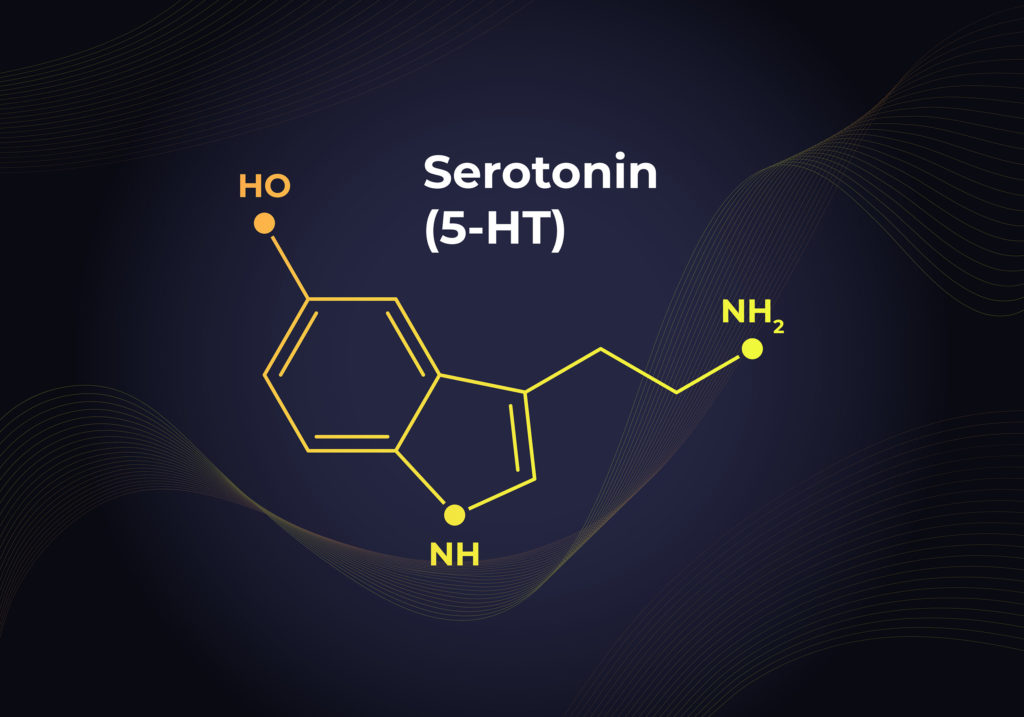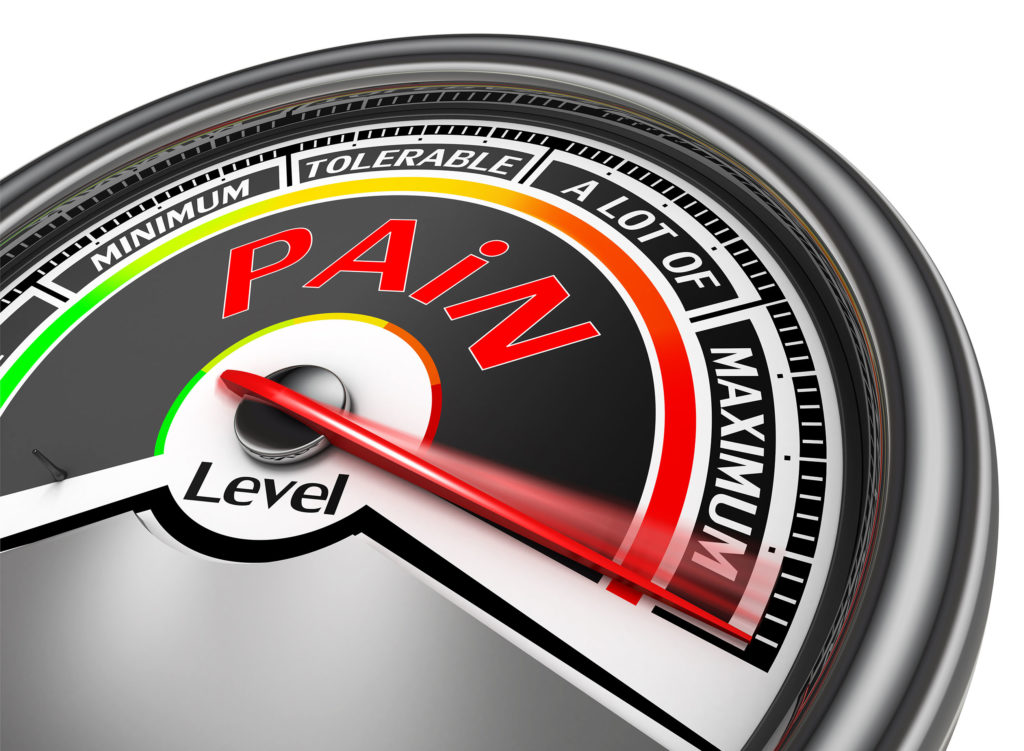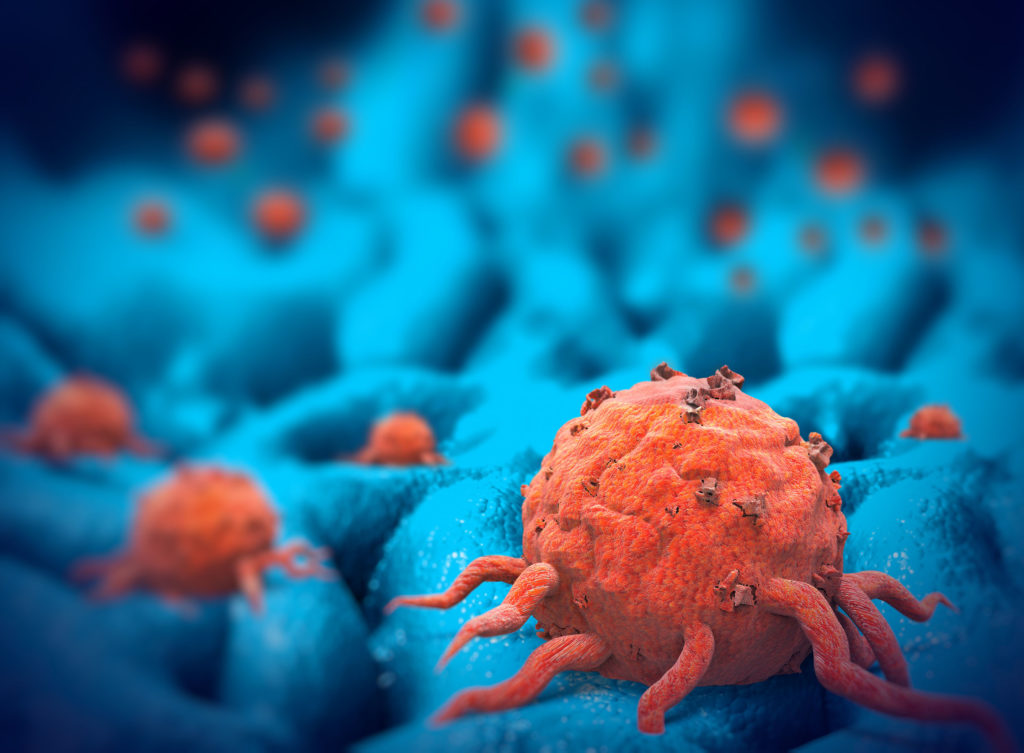Much is being made of the potential of cannabis to cure cancer, but the scientific community is far from reaching consensus on this. Although the medical community is more certain about cannabis’ ability to manage side-effects related to cancer therapy, there is controversy about whether cannabis can or cannot reduce tumour size. Here, we look at the ways in which cannabis may help.
Cancer is the uncontrolled proliferation of cells in a certain part of the body, whereby these cells eventually become malignant and invade nearby tissues. Cancer had an incidence of 17 million new diagnoses in 2018 and that number is expected to rise to 27.5 million new cases annually by 2040. In 2018, almost 10 million people died as a result of cancer.
Conventional cancer treatment usually employs several different concurrent treatments. It is unusual, although it does happen, that a patient should receive a single line of treatment. The most common treatments are chemotherapy, radiation therapy, immunotherapy and sometimes hormone therapy. Along with these treatment options are usually secondary treatments to manage the side-effects of the first line of treatment.
Common side effects of cancer therapy are nausea, weight loss, fatigue, anaemia and infection. For the most part, cannabinoid therapy is aimed at targeting these side effects and thereby increasing the quality of life for patients. However, the antiproliferative (anti-tumour) effects of cannabinoids are currently being researched for their potential in cancer treatment.
1. Cannabis is an antiemetic (helps fight nausea and vomiting)
Nausea and vomiting are extremely common side-effects of chemotherapy. Chemotherapy drugs (primarily cisplatin) cause nausea by a suggested excess of serotonin in specialised enterochromaffin cells, which are found in high concentrations in the gastrointestinal (GI) tract, which are found in high concentrations in the gastrointestinal (GI) tract.

The excess serotonin irritates the mucosa (inner lining) of the GI tract and stimulates the serotonin (HT-5) receptors of the vagus nerve. This is the main nerve controlling the parasympathetic nervous system of the GI tract. The vagus nerve then sends stimuli to the area postrema, a small area within the medulla oblongata (lower brainstem) that is known as the vomiting centre.
Cannabinoids (particularly CBD) are thought to reduce symptoms in chemotherapy patients by binding to the 5-HT(5) receptors and blocking the action of serotonin. Cannabinoid receptor agonists such as THC also appear to directly suppress vomiting and nausea by agonising the CB1-receptor –while antagonists of the CB receptors such as CBD are neutral, and inverse agonists actually cause nausea.
This suggests there is a role for both THC and CBD in managing nausea and vomiting—THC by agonising the CB1-receptor and CBD by antagonising the 5-HT(5) receptors and blocking serotonin binding.
2. Appetite stimulation by cannabis
Chemotherapy drugs are well-known to cause anorexia (appetite loss), also partly due to their effects on the serotonin signalling system.

Studies have demonstrated that presence of cisplatin leads to excess production of serotonin and overstimulation of the vagus nerve. This then leads to a reduction of ghrelin, the ‘hunger hormone’ that is secreted when the stomach is empty. Without ghrelin, the brain does not receive the stimuli needed to produce sensations of hunger.
Various studies have shown that presence of ghrelin or cannabinoid agonists such as THC cause increased production enzyme, AMPK (AMP-activated protein kinase), in the hypothalamus. The enzyme is crucial to the metabolic processes that regulate energy homeostasis (energy balance) in the body, and is produced in response to stimulation of the GHS-R1a ghrelin receptors found in the adipose tissue.
Thus, CB1 agonist HU210 can effectively do the job of ghrelin by activating the receptors and directly stimulating the brain to produce sensations of hunger.
3. Cannabis antidiarrhoeal properties may help patients
Diarrhoea can be a side-effect of chemotherapy and radiotherapy, and may also be a direct symptom of several cancers, including lymphoma, colon cancer, pancreatic cancer, medullary carcinoma of the thyroid, and neuroendocrine cancers.

If episodes are prolonged, diarrhoea can cause dehydration, weight loss, fever and abdominal pain. Secretory diarrhoea, where the body release excess water or hormones into the GI tract, is the most common form associated with cancer.
Cannabinoids have been shown to reduce symptoms of secretory diarrhoea, particularly Δ9-THC. It does so by agonising the CB1-receptors in the GI tract and thereby assisting in the regulation of intestinal motility and secretions.
Colitis may also play a part in causing diarrhoea; use of cannabinoids is well-known to reduce inflammation.
4. Analgesic – cannabis for pain relief
Cancer sufferers undergoing chemotherapy often report pain especially in the form of headaches, sore muscles, stomach ache and neuralgia (nerve pain). Much of the pain arising as a result of chemotherapy occurs due to inflammation, although it may also be caused by the formation of lesions or ulcers in the mucous membranes.

As well as this, the disease itself can cause severe pain in its latter stages, often due to tumours exerting pressure on nerves, bones or organs as they grow.
Cannabis is widely used in the management of chronic pain arising from a range of conditions not limited to cancer. Cannabis’ ability to reduce inflammation is crucially important in the management of pain arising due to chemotherapy.
Both antagonists such as CBD and the endogenous agonist 2-AG are thought to reduce inflammation by inhibiting macrophage function. Macrophages are large, specialised white blood cells that are fundamental to various immune responses.
Furthermore, the hyperalgesia (increased sensitivity to pain) and neuropathic pain that occurs due to tumour-induced damage to the peripheral nerves may be directly controlled through use of cannabinoids.
Studies have shown that cannabinoid receptor agonists such as THC and the synthetic cannabinoid WIN55,212-2 reduce hyperalgesia in deep tissues affected by tumour growth by agonising the cannabinoid receptors on the nociceptors, or pain-sensing neurons.
5. Cannabis may serve as an antidepressant
Depression in cancer patients is one of the most overlooked symptoms, but can be severely detrimental to quality of life, and is experienced by the majority of sufferers. If untreated, depression can lead to a range of complications that can work together to effectively make the patient even more ill. For example, the appetite loss associated with chemotherapy can be significantly increased in depressed patients.

It may also affect sleep quality and stress levels, both of which can lead to physiological health issues. Cancer patients treated with antidepressants also report feeling reduced fatigue, anxiety, and pain.
The ability of cannabis to treat depression is disputed, and there is substantial evidence on both sides. Several studies have indicated that Δ9-THC, CBD, and CBC (cannabichromene) can exert an antidepressant-like effect. The endocannabinoid system is known to play an important role in mood regulation and subjective levels of happiness. Endocannabinoids such as anandamide are fundamental to the process.
It is believed that certain genetic variations in the expression of CB1-receptors render some individuals more susceptible to the mood-elevating effects of cannabis.
6. Antiproliferative – cannabinoids may reduce tumour growth
Certain preclinical studies have suggested that Δ9-THC and other phytocannabinoids may have anti-cancer effects in vitro and in vivo by exerting antiproliferative qualities on cancer cells. In one study conducted in 2008 and published in the International Journal of Cancer, cannabinoids were applied to normal pancreatic cells and cancerous pancreatic cells. The results indicated that activation of the CB2 receptor in particular may induce apoptosis of pancreatic cancer cells without affecting the normal cells.

Another experiment was conducted by Galve-Roperh et al. in 2000. In this example, a synthetic cannabinoid, WIN-55,212-2 and Δ9-THC were administered to Wistar rats with malignant gliomas. Using cannabinoid receptor pathways, the two cannabinoids were able to signal apoptosis of cancer cells without any substantial neurotoxic effect in the conditions used.
Guzman and his team were the first group to publish a Phase I human study on the anti-tumoural effects of Δ9-THC. The sample size included only 9 patients, all of whom had recurrent glioblastoma and who were resistant to radiotherapy and surgery. The patients in this two-part clinical trial were treated with intercranial Δ9-THC in conjunction with a chemotherapeutic agent. The combined treatment showed reduction of tumour size in 2 of the 9 patients.
There are very few examples of clinical trials performed on the effect of cannabinoids on human cancer cells in vivo. Most human clinical trials have revolved around pain and cognitive defects. At this stage, the research into the antiproliferative effects of cannabinoids is not conclusive, and more research is warranted, especially in the form of human clinical trials.
Cannabis may not benefit every individual suffering from cancer, and may even cause adverse effects in a small number of people, although any adverse effects experienced are usually far less severe than the side-effects of chemotherapy or radiotherapy.
However, as our understanding of the properties of cannabis increases, we are learning just how important it could be in the management of cancer symptoms, and perhaps in the reduction of tumour size. Drugs with the ability to simultaneously treat a broad set of symptoms such as nausea, anorexia and diarrhoea are rare. And those that can do so without causing severe side-effects of their own are rarer still.
- Disclaimer:This article is not a substitute for professional medical advice, diagnosis, or treatment. Always consult with your doctor or other licensed medical professional. Do not delay seeking medical advice or disregard medical advice due to something you have read on this website.












Hi,
What is the dosage of THC and CBD to be able to treat liver cancer.
Each quantity in % and the usage.
Many thanks.
Regards
Farhan
Hi Farhan,
Thank you for your comment. I am sorry that I am unable to answer your question. As Sensi Seeds is not a medical agency or practitioner, we cannot give any kind of medical advice other than to consult your registered healthcare professional. This article about the potential benefits of medicinal cannabis might be useful for you to show your healthcare provider if they are not familiar with it.
Additionally, there is nobody who can accurately answer your question, even a healthcare professional – the unfortunate answer is that no-one knows, as there simply hasn’t been enough research done in this field. There have been some partly successful trials done which show that in laboratory conditions, the cells of certain types of cancer can be made to “self-destruct” using CBD (I’ve linked to the study), but science is a long way from being able to answer questions like yours.
As you are probably aware, there are people who have experienced amazing recoveries from different ailments by using cannabis and cannabis extracts, but there is still no way of knowing if it will work for a specific individual, and there are also many people for whom it did not work. Please be wary of anyone claiming a particular product will definitely work, especially if they are charging money for it. This holds true for all products, not just cannabis – there are people who claim raw carrot juice will cure cancer. I am sorry that I cannot give you more encouraging news.
You may also find it helpful to contact a support group for medicinal cannabis patients. In the UK there is the United Patients Alliance, and throughout much of the rest of the world there is NORML, who should be able to put you in touch with a group in your area (search United Patients Alliance or NORML followed by your area name).
With best wishes,
Scarlet
My sister was just diagnosed with uterine cancer. Unfortunately, she has had symptoms for about 4 years, ie:bleeding, and in the past year, abdominal, back and leg pain. She is scheduled for a hysterectomy but will not have chemo or radiation. Will THC treatment benefit in these circumstances?
Dear Ruby,
Thank you for your comment. We are sorry to hear about your situation. As Sensi Seeds is not a medical agency or practitioner, we cannot give any kind of medical advice other than to consult our registered healthcare professional. This article about the potential benefits of medicinal cannabis might be useful for you to show your healthcare provider if they are not familiar with it.
You may also find it helpful to contact a support group for medicinal cannabis patients. In the UK there is the United Patients Alliance, and throughout much of the rest of the world there is NORML, who should be able to put you in touch with a group in your area (search United Patients Alliance or NORML followed by your area name).
These are our pages on medicinal cannabis and medicinal cannabis strains, which you might also find interesting.
With best wishes,
Scarlet
Good blog.Thanks for giving information.
Thank you for giving about cancer fight. your blog is good. vtsbharath organization conducted many cancer test in various places.
My wife has cancer. Started in lungs and now in her liver. More test being done to find out what type of cancer it is. Lymph nodes are included in the MRI and CT scan as being affected. Going to have another MRI on her brain and a PET scan to see if it is in her bone.
This sounds too far gone but we have hope. Is there anything we can do?
Dear Jerry,
Thank you for your comment. I am so sorry to hear about your situation. Unfortunately, as Sensi Seeds is not a medical practice, we are not able to provide any advice relating to medical situations other than to consult your doctor or other licensed medical professional. This article, written specifically for healthcare providers who may not be aware of the many properties of cannabis, may be useful to you in talking with your doctor. You could also try to contact local medicinal cannabis support groups, if you have not already done so. In the UK, there is the United Patients Alliance (you can find them on Facebook) and in the US and EU there are many branches of NORML (google NORML followed by your area name). We hope this is helpful.
With best wishes,
Scarlet
Great.
Does thc and cbd work on triple negative breast cancer?
Hello Tency,
I’m afraid I can’t answer that question directly, as Sensi Seeds is not a professional healthcare provider, but you may find more information in this article and also the references it links to. I hope this is helpful.
With best wishes,
Scarlet
can cannabis oil cure cancer
Hi, Somebody knows how we can convert THC to CBD and how is the mechanism?
If they substantiate their findings with positive results from field trials it would be simply put a revolution in cancer care.
If evidence shows that the pharmaceutical industry and the health service had prior knowledge to the therapeutic effects of weed , heads should roll!
It would be a crime of such magnitude , if true , that it will undermine the credibility of the whole western governmental apparatus and it’s abilities to care for it’s people.
Again it amazes me that the pharmaceutical companies have so much pull as to not wanting to try to find a cure for cancer. The American Indians have always used marijuana and have always known the medicinal effects it has. It has always had many uses….we need to look into the past of medicine men, women.
They did know more than even the doctors of today.
Does the Id-1 gene expression reveal itself in all metastatic types of cancer, or is this a specific gene for this type of breast cancer?
Wow.. that sounds extremely encouraging, please keep posting updates on this if you have any additional findings.
That’s just for starters the possibilities could be endless great work tho keep it up